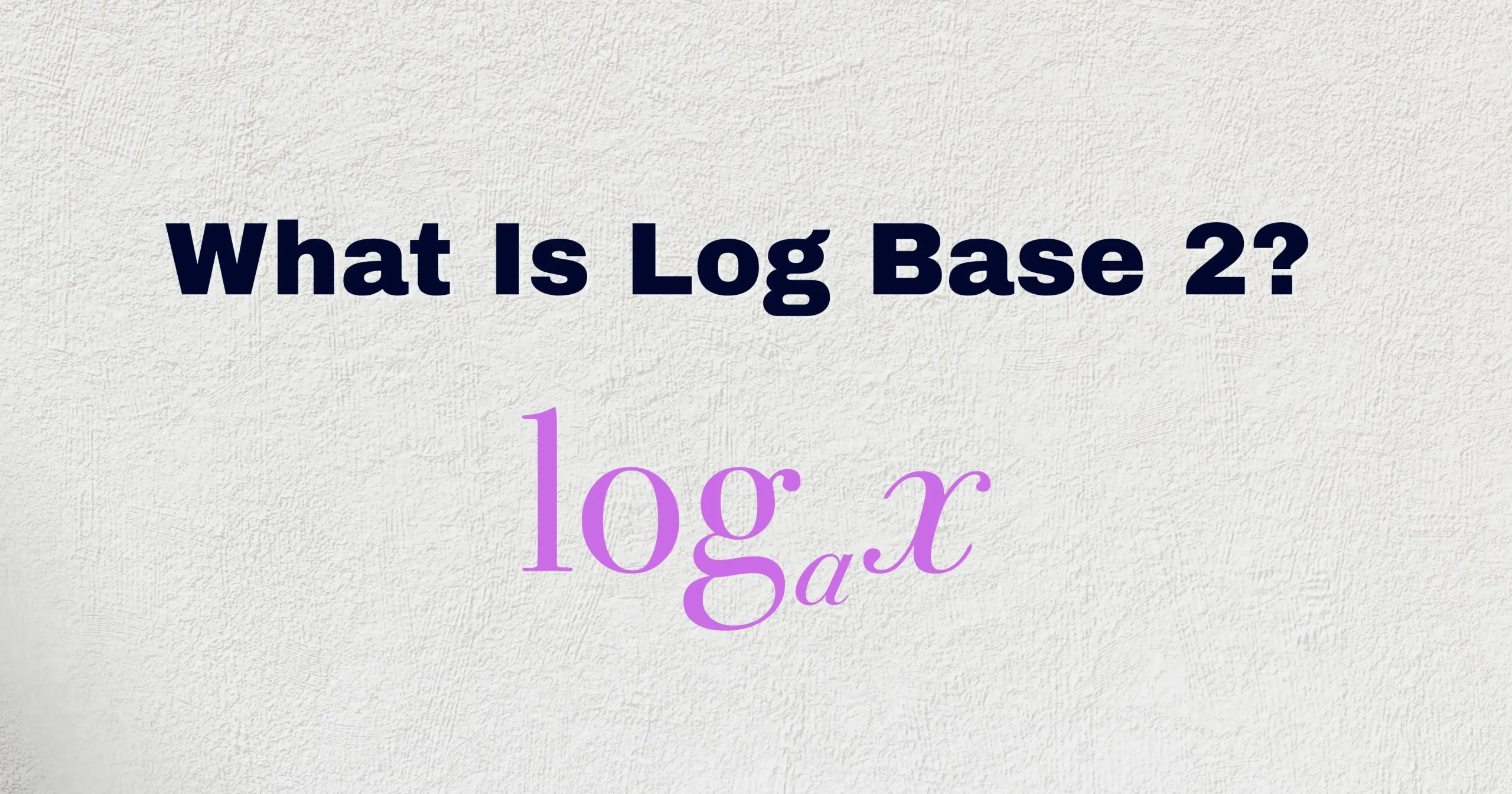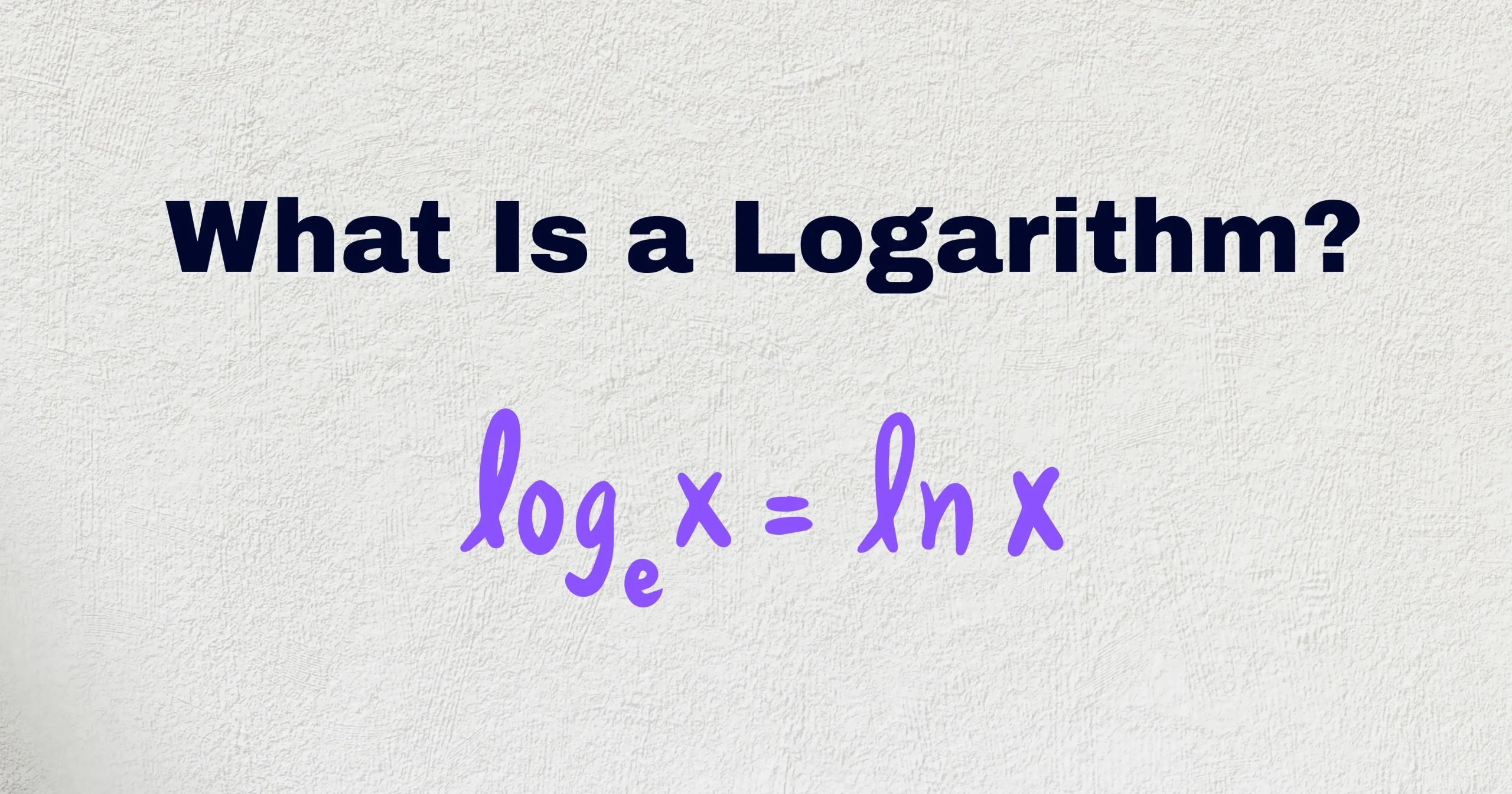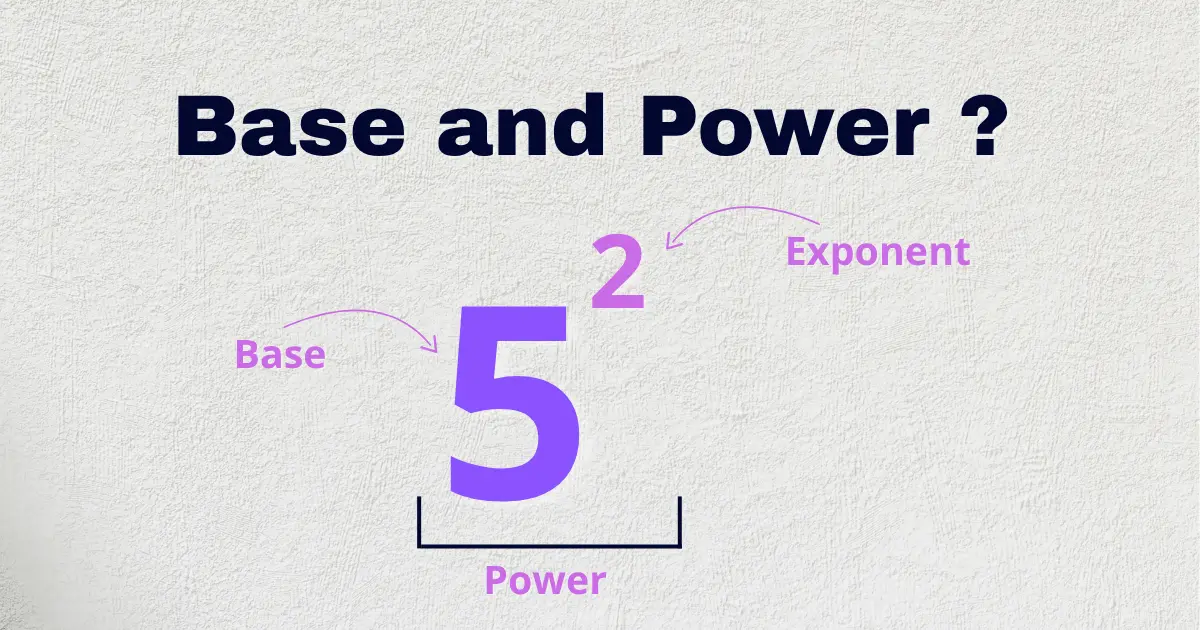In computers, log base 2 helps us understand how data is stored and used. It shows how many times we need to multiply 2 to get a number.
If you’ve seen file sizes (like KB or MB), used binary numbers (just 0s and 1s), or learned about algorithms, log base 2 is working behind the scenes.
In this guide, you’ll learn:
- What log base 2 means
- How to use its formula
- Where it’s used in real life
- Some easy examples to practice
Let’s make it simple and clear, step by step!
Definition of Logarithm
- logₐ(x) = y ➔ aⁿ = x
Before we learn about log base 2, let’s understand what a logarithm is. A logarithm tells us how many times we need to multiply a number (called the base) to get another number.
Example:
- log₂(8) = 3 ➔ because 2³ = 8
This function is called the logarithmic function, and it has three components:
- The base (a)
- The input (x)
- The output or exponent (y)
Common bases include:
- Base 10: log₁₀(x) (common logarithm)
- Base e: ln(x) (natural logarithm)
- Base 2: log₂(x) (binary logarithm)
Logarithms are inverse operations of exponents. So, if 2ⁿ = x, then log₂(x) = y.
Understanding Log Base 2 in Simple Terms
To understand log base 2, imagine folding a sheet of paper. If you fold it once, you get 2 layers. Fold again: 4 layers. Fold again: 8 layers. The number of folds = log₂(number of layers).
Real-life example:
- You have 16 pieces of chocolate. How many times do you need to divide them in half to get 1 piece?
Answer: log₂(16) = 4
Another scenario: You want to know how many times you can split a group of people in half before ending up with individuals. That number is log₂(group size).
This shows the log base 2 meaning: how many times do you divide or multiply by 2 to reach a target number.
Formula of Log Base 2
The log base 2 formula is fundamental for solving problems involving binary growth or division. It’s written as:
- log₂(x) = y ⇔ 2ʸ = x
This equation tells us: “To what power must 2 be raised to get the number x?” In simpler terms, you’re finding how many times you can multiply 2 to reach a certain value.
Examples:
- log₂(32) = 5 → Because 2⁵ = 32
- log₂(64) = 6 → Because 2⁶ = 64
- log₂(1) = 0 → Because 2⁰ = 1
- log₂(0.5) = -1 → Because 2⁻¹ = 0.5
This formula is especially helpful when working with powers of two, which frequently appear in computing, binary systems, and algorithm analysis. You can also rearrange this formula to solve exponential equations like:
- 2ʸ = 128 ⇨ log₂(128) = y ⇨ y = 7
Change of Base Formula for Log Base 2
Most basic calculators don’t have a direct log base 2 button. But you can still calculate it using either common logarithms (base 10) or natural logarithms (base e). Here’s how:
Using Base 10:
$$\log_2(x) = \frac{\log_{10}(x)}{\log_{10}(2)}$$
Using Natural Log (ln):
$$\log_2(x) = \frac{\ln(x)}{\ln(2)}$$
Both methods give you the same result, and they’re crucial when working with decimal or non-exact values. For example:
- log₂(20)
$$\frac{\log_{10}(20)}{\log_{10}(2)}$$
$$\frac{1.3010}{0.3010} \approx 4.32$$
- log₂(5)
$$\frac{\ln(5)}{\ln(2)}$$
$$\frac{1.6094}{0.6931} \approx 2.32$$
The change of base log formula is a powerful trick for solving any log base 2 problem, even when you’re limited to basic scientific tools.
Properties of Log Base 2
The properties of log base 2 are essential for simplifying and solving logarithmic expressions. These rules help break down complex problems into manageable parts, especially useful in programming, mathematics, and data science.
1. Product Rule
- log₂(ab) = log₂(a) + log₂(b)
When two values are multiplied inside the log, you can split them into the sum of two separate logs.
Example:
- log₂(8 × 4) = log₂(32) = 5
- log₂(8) + log₂(4) = 3 + 2 = 5
2. Quotient Rule
$$\log_2\left(\frac{a}{b}\right) = \log_2(a) – \log_2(b)$$
If you’re dividing inside the log, convert it into a subtraction of two logs.
Example:
$$\log_2\left(\frac{16}{2}\right) = \log_2(8) = 3$$
$$\log_2(16) – \log_2(2) = 4 – 1 = 3$$
3. Power Rule
If the input is raised to a power, bring that power in front of the log as a multiplier.
Example:
- log₂(4³) = log₂(64) = 6
- 3 × log₂(4) = 3 × 2 = 6
These log base 2 properties help simplify logarithmic expressions, making it easier to handle exponential growth or decay in real-world problems. They are especially useful in:
- Algorithm complexity analysis
- Binary tree depth calculations
- Data compression and cryptography
By mastering these rules, you’ll have a faster, more efficient way to approach both theoretical and practical problems involving logarithms.
Log Base 2 to Exponential Form
Converting a logarithmic expression to its exponential form is a key skill in both math and computer science. Specifically, for log base 2, the conversion helps simplify calculations and understand powers of 2, a common base in binary and algorithm design.
The general form of a log base 2 equation is:
- log₂(x) = y
This can be rewritten in exponential form as:
- 2ʸ = x
This means that the logarithm tells you the exponent you must raise 2 to in order to get x.
Example:
- log₂(8) = 3 ➝ 2³ = 8
This shows that 2 raised to the power of 3 equals 8.
This conversion is especially useful in algebra, data structures, coding algorithms (like binary search), and analyzing time complexity (e.g., O(log₂ n)) in computer science.
Understanding this relationship helps make complex logarithmic expressions more intuitive and manageable.
Log Base 2 Table (Values from 1 to 100)
Here is a reference table showing log base 2 values for numbers from 1 to 100. This can help you quickly estimate or verify results in binary calculations, algorithms, and logarithmic equations without needing a calculator.
| x | log₂(x) |
| 1 | 0.000 |
| 2 | 1.000 |
| 4 | 2.000 |
| 8 | 3.000 |
| 16 | 4.000 |
| 32 | 5.000 |
| 64 | 6.000 |
| 100 | ~6.643 |
Practice Question
Test your understanding with these log base 2 practice problems. Use logarithmic rules (product, quotient, power) and estimation for approximations:
- log₂(128) = ?
- log₂(1/8) = ?
- log₂(2³ × 2²) = ?
- log₂(256) = ?
- log₂(0.25) = ?
- log₂(512) = ?
- log₂(0.125) = ?
- log₂(2⁶ / 2²) = ?
- log₂(10) ≈ ? (approximate)
- log₂(3.5) ≈ ? (approximate)
- log₂(64) = ?
- log₂(2⁵) = ?
- log₂(1) = ?
- log₂(2⁰.⁵) = ? (hint: square roots)
- log₂(100) ≈ ? (approximate)
Common Mistakes with Log Base 2
When learning log base 2, it’s easy to make small mistakes. Here are some to watch out for:
- Using the wrong base: Don’t mix up log base 2 with log base 10 (log) or natural log (ln). Always check you’re using base 2, especially in coding or binary problems.
- Wrong input: You can only use log base 2 with positive numbers.
Example: log₂(0) or log₂(−5) doesn’t work.
- Formula errors: Don’t forget the correct rules:
- log₂(a × b) = log₂(a) + log₂(b)
- log₂(a ÷ b) = log₂(a) − log₂(b)
- log₂(aⁿ) = n × log₂(a)
- Calculator issues: Some calculators don’t have log base 2. Use this formula:
$$\log_2(x) = \frac{\log_{10}(x)}{\log_{10}(2)}$$
Log Base 2 Calculator
A log base 2 calculator is a helpful tool for quickly finding the logarithm of any positive number with base 2. It’s especially useful for students, programmers, and anyone working with binary systems or exponential functions.
How to Use Log Base 2 Calculator
- Enter a positive number into the input field.
- Click the “Calculate” button to process the input.
- View the result of log₂(x) displayed instantly on the screen.
This online calculator supports both whole numbers and decimals, providing fast and accurate outputs without manual calculation. It reduces the risk of mistakes and is ideal for assignments, coding, or checking complex expressions in seconds.
Real-World Applications of Log Base 2
Log base 2 isn’t just something you learn in school—it’s used in many real-world technologies, especially in computers and data systems.
In Computer Science:
- Binary Search: Used to find things quickly in sorted lists. It takes about log₂(n) steps.
- Binary Trees: Log base 2 helps figure out how tall a tree is, which makes searches faster.
- File Sizes: Computers use powers of 2 (like 2, 4, 8, 16…), so log₂ helps measure how many bits are needed to store data.
- Sorting Algorithms: Fast sorting methods like merge sort use log base 2 in their time calculations.
In Information Theory:
- Entropy (Information Amount): Log₂ tells how much information is in a message, measured in bits.
- Data Compression: Used to shrink file sizes without losing important info.
- Internet Speed (Bit Rate): Log base 2 helps figure out how many bits are needed to send or receive data.
In Science and Engineering:
- Sound and Images: Formats like MP3 and JPEG use log base 2 to make files smaller.
- DNA and Genetics: Scientists use log-based math to work with large amounts of genetic data.
- Log base 2 is all around us, in apps, music, videos, the internet, and even science labs!
FAQs on Log Base 2
What is log base 2 in algebra?
In algebra, log base 2 helps solve exponential equations involving powers of 2. For instance, if log₂(x) = 3, then x = 2³ = 8.
How do you solve log base 2 equations?
Rearrange them into exponential form: log₂(x) = y becomes x = 2ⁿ. Then calculate the power to get your solution.
What is the derivative of log base 2?
The derivative of $$\frac{d}{dx} \log_2(x) = \frac{1}{x \cdot \ln(2)}$$. It is used in calculus to determine rates of change.
Is log base 2 the same as binary log?
Yes, binary logarithm is another name for log base 2. It’s commonly used in computer science to measure bits.
Can log base 2 be negative?
The result can be negative when the input is between 0 and 1. For example, log₂(0.5) = -1.
What is log base 2 of 0?
It is undefined because no power of 2 gives 0. Logarithms are only defined for positive real numbers.
How is log base 2 used in data structures?
It’s used to determine the height of binary trees or complexity of algorithms like binary search. These structures are logarithmic in nature.
Is log base 2 used in everyday life?
Yes, especially in digital devices, data compression, and even music encoding. It helps with calculating storage and data transmission rates.
What if my calculator doesn’t have log base 2?
Use the change of base formula: $$\log_2(x) = \frac{\log_{10}(x)}{\log_{10}(2)}$$. Most scientific calculators support base 10 logs.
Why is log base 2 important in algorithms?
Because many algorithms work by dividing data in halves, making their complexity logarithmic. It helps measure efficiency and performance.






